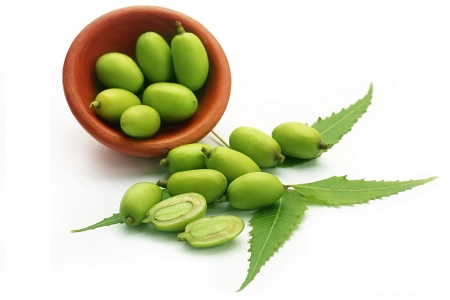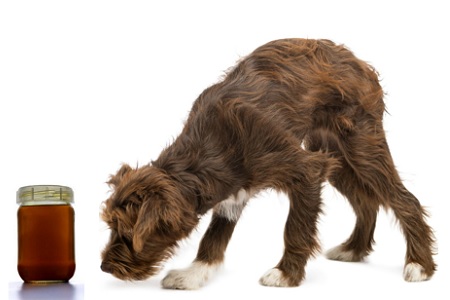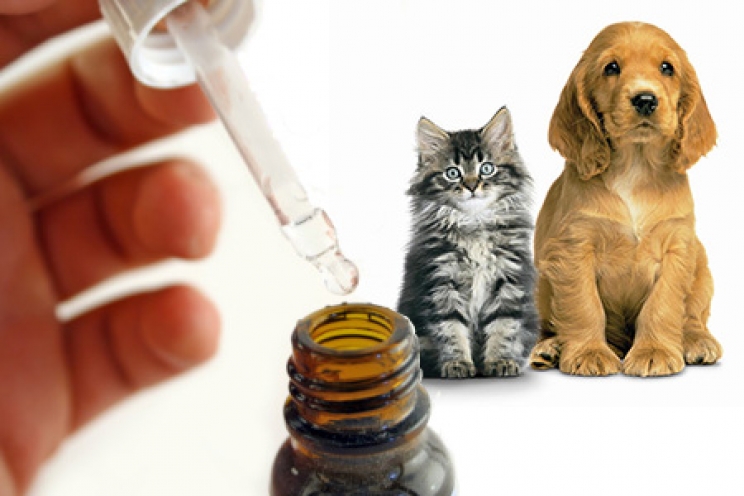Summer is undoubtedly one of our favourite seasons, but certainly a little less for our four-legged friends, that have to deal with heat, parasites and annoying insects, such as mosquitoes. In the last period, alongside the traditional anti-parasite products, natural ones have spread more and more. In first place we find a remedy based on Neem oil, a plant with portentous effects, completely harmless for dogs and cats.
What is Neem oil?
Neem (Azadirachta indica) is a tree native to India, where it is known as a nim. Since ancient times, Neem leaves have been widely used by Indian populations, who use them mainly to ward off insects.

Neem, in fact, is one of the most common remedies of Ayurvedic medicine, an oriental discipline that involves the use of plants, metals or minerals for cosmetic and curative purposes. Not surprisingly, according to the sources handed down a long time ago, the nim was already known in two thousand BC as the "Arishta", or in other words "the tree that free from diseases", or in Arabic "Shajar-e-Mubarak" , "Blessed tree".
To come across the interesting properties of this tree was firstly a German entomologist, who in the late 1950s, in an attempt to end an invasion of locusts in Sudan, noticed that the only plants immune to these fearsome insects were those of Neem.
Every single part of the plant, from the roots up to the leaves, including seeds and fruits, have very useful properties, which make it an effective remedy against various problems, even for our four-legged friends. In particular, the most used parts since ancient times are the leaves and seeds, from which a precious and useful oil is extracted.
The plant, in fact, would contain several substances belonging to the group of so-called "limonoids", including salannine, nimbidine, nimbine, but above all azadiractin, widely used in agriculture to remove annoying insects and pests. In fact, a great advantage of Neem oil-based plant products is the low level of toxicity, which makes them harmless to humans, animals and even to the environment.
What can we use it for?
Neem oil can have a large number of beneficial properties, both for us and for our four-legged friends. In particular, it can be used in dogs and cats in the case of:
- Mites: dogs and cats can often come across mites, such as those of the ears or the mites responsible for the so-called sarcoptic mange. A few drops of pure Neem oil can be applied on the affected area, whilst a solution of Neem oil diluted in water can be sprayed on all parts of the house where the animal spends more time, such as beds, pillows, blankets and rugs;
- Fleas: Neem oil is extremely precious against fleas, considering that it eliminates both the adult parasite and the larvae. You can apply a few drops of pure oil or diluted in water, directly spraying it on the hair. The use of oil is also very useful to make protective collars against fleas. We can pour a few drops of pure oil on our friend's collar, or we can dip a strip of fabric in the oil that we will wrap around the neck of the dog or cat;
- Mosquitoes and sand flies: many Neem oil-based products are used to make natural repellents against the so-called "sand flies", which are insects that sting (similar to mosquitoes) but much more dangerous as they can transmit Leishmaniasis, a very harmful infectious disease especially for dogs. We can apply a few drops of Neem oil along the back of the animal, and massage it on the skin, or make a do-it-yourself flea repellent collar, also excellent against sand flies. In fact, Neem oil has a very strong smell, which recalls that of garlic, particularly unpleasant for insects. An excellent advice is to use a few drops of Neem oil in all the stagnant water deposits inside and outside the home, such as saucers and gutters. You will eliminate any mosquito larvae and prevent new insects from approaching;
- Mosquito bites: If mosquitoes or sand flies have already stung the dog or cat, we can massage a drop or two of Neem oil on the sting. In a few minutes itching, redness and swelling will disappear, giving relief to our friend;
- Respiratory tract infections: Neem oil has an excellent balsamic effect for respiratory tract infections, very frequent especially in cats. Pour 2-3 drops into the environment where your pet lives, perhaps in a small bowl with water, to help him breathe better;
- Joint pain: Neem oil is an excellent natural anti-inflammatory remedy, so it can also be used to relieve pain caused by arthritis, arthrosis, rheumatic pain and trauma, massaging a few drops on the painful area;
- Wounds: bites, scratches and any infected wounds can be adequately treated with Neem oil, which will be able to accelerate the healing process of the skin, also helping to eliminate and prevent infections by bacteria;
- Dermatitis: many skin problems, such as flea allergy dermatitis (FAD) or food intolerance dermatitis, can be treated with Neem oil, which relieves itching and redness. Excellent also in case of dandruff. Of course, in these cases the original cause of the problem must also be treated;
- Gingivitis: dogs and cats with inflamed gums can find relief by brushing their teeth with their usual toothpaste, to which we will add a drop of Neem oil.
These are just some of the possible uses of Neem oil for dogs and cats, especially for those who prefer to avoid resorting to drugs and chemical substances.
 Neem oil, in fact, has a very low level of toxicity, so it is harmless for our animals. To avoid problems, however, we recommend applying it first on a small part of the animal's skin, which we will monitor during the day. Any redness or swelling may indicate an allergic reaction, so we will have to wash the area immediately with water and a neutral soap for animals.
Neem oil, in fact, has a very low level of toxicity, so it is harmless for our animals. To avoid problems, however, we recommend applying it first on a small part of the animal's skin, which we will monitor during the day. Any redness or swelling may indicate an allergic reaction, so we will have to wash the area immediately with water and a neutral soap for animals.
If we opt for pure Neem oil, we must ask our trusted herbalist, verifying that it is actually a pure product, without solvents and chemical preservatives. Pure Neem oil has a very dense consistency, so it is preferable to warm it in a bowl of hot water before applying it.
To create a solution of Neem oil and water, we must wait before it becomes a little more liquid by slightly heating it with warm water, then pour a tablespoon of oil in about 200 mL of distilled water. We put everything in a spray bottle and remember to shake well before use.
Alternatively, a very wide range of products is available on the market, entirely based on Neem oil, from shampoo to spray lotion, up to spot on and collars.
In any case, we remind you that it is always advisable to hear the opinion of our veterinarian before resorting to natural remedies.










